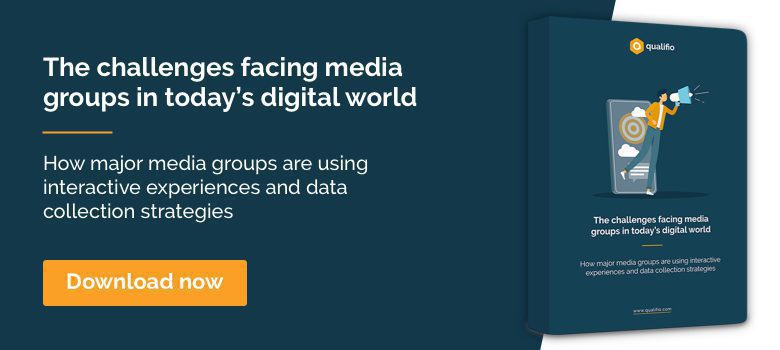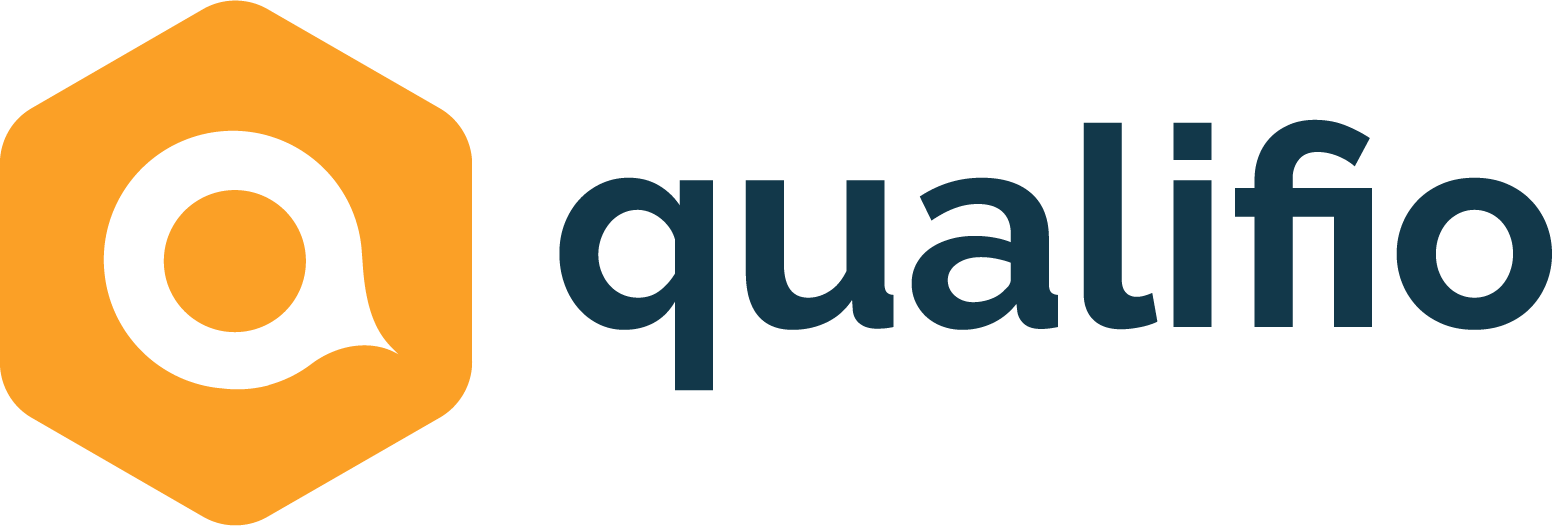The top 5 challenges faced by media groups in the digital world
Qualifio was set up in 2011 with the belief and passion that in the digital world, interactivity, gamification and engagement are the way forward and will help media groups to get their consumers down the conversion funnel.
Like most industries in the digital age, the publishing industry is evolving and changing at a staggering speed, to keep up with the latest trends and developments. In this article we take a look at the top 5 of the biggest challenges that digital publishers and media groups are currently facing in the digital world.
With a major disruption to the digital ecosystem on the horizon, as third-party cookies will no longer be supported on most browsers from the end of 2023 and first-party and zero-party data are set to play an increasingly important role, we decided to take a closer look at the current state of the media landscape. In our new e-book, we analyse the trends that are currently dictating the industry and how interactive marketing can help media groups and publishers to optimise their conversion funnel.
Download our new e-book and find out more about how media groups and digital publishers are facing the future in the digital world.

#1 Digital transformation
In the past decade, media groups have been facing a growing number of challenges in their journey to digital transformation:
- ⬇️ declining audiences in traditional media
- 🔄 adapting the newsroom to new distribution channels and formats
- 💰 difficulties to monetise content
- 🥊 fierce competition from social media channels and Google for advertising revenue
And these challenges are being faced at all levels, from the newsroom to the boardroom.
As the former CEO of Procter & Gamble put it, when discussing the increasing distance between them and their consumers:
It’s time to accept that retailers now know more about P&G’s customers than we do.
And this statement can also be applied to publishers and media groups, consumer brands have been investing in their digital journeys over the past few years, and especially in their first-party and zero-party data strategies, with the end-goal of getting to know their consumers. So the publishing industry needs to do the same, and new and innovative solutions are needed across the industry, in order to adapt to the fast-paced and omniscient digital ecosystem. New tools, better knowledge and segmentation of audiences are needed, alongside and a new approach to online advertising. Read our ebook to discover the revenue-generating interactive solutions that major European publishers are using to get their advertisers more involved in their data collection strategies.
#2 Cookieless world
Third-party cookies have been on their way out for a while now, and their expiry date on our browsers is scheduled for the end of 2023, but the looming cookieless world is a threat that cannot be ignored by any company who has skin in the digital game, whether they’re a consumer brand or a media group.

Whilst preparation for the cookieless world has drastically moved forward in the past couple of years, and there is still a long way to go on a lot of fronts, the progress made is encouraging and bodes well, as Teads found out in their survey:
What’s most encouraging is to see that publishers are making changes to insulate their business models from external factors. By focusing on quality content and 1st party data, they are giving advertisers the best possible opportunity to buy sustainable media that delivers real business outcomes. It’s a very exciting time for publishers.”
So it’s not all doom and gloom, and this challenge should actually be considered as a golden opportunity! A clear way forward for publishers and media groups is to include a clear and well-thought out data collection strategy in their marketing plans, and more specifically a first-party and zero-party data collection strategy. This will allow them to get to know their audience better, improve their relationship with them and engage with them in a more meaningful way.
#3 Audience knowledge and understanding
It’s all very well having a large audience but if you don’t know anything about your audience or understand what it is they’re seeking out, then chances are you’re going to struggle to keep that audience engaged and you risk losing them to competition.
So getting to know your audience and understanding their preferences and needs is key when trying to retain and monetise them. You’ll only be able to turn anonymous users into logged in and subscribed members once you know more about them.
The application of GDPR and other data protection laws, such as the CCPA in California, have had a significant impact on the amount of knowledge a brand or media company has of their audience. This means that in order to bridge this gap of knowledge, publishers need to look into innovative and new strategies, and according to Forbes, the answer lies in interactive marketing.

#4 Value exchange for digital content
In any context, but especially in media, content is far from free to produce. In the past decade or so, the move from majoritarily paper media to digital has outdated the idea for many of paying for content, when it should actually be normalised. Just as consumers will willingly pay for a physical newspaper or magazine, there is still some way to go in getting people used to paying for the digital content they consume. As explained by the SVP of Research & Analytics at IAB:
To put it bluntly, the old value exchanges just aren’t enough. The model is broken. Publishers and media companies have to reimagine reciprocity or risk the flight of consumers to competitors.”
The concept of value exchange is a highly important one in media. By providing trustworthy, high quality and reliable information and content, combined with an impeccable brand experience, a publisher will be fulfilling their half of the exchange. Thus encouraging the reader to share their personal data, in exchange for what the publisher has to offer.

#5 Gen Z
We’ve all heard of them, this younger generation, born between 1997 and 2012, who are puzzling consumer brands and organisations the world over with their new views and attitudes to news consumption and consumer habits. They’re the first generation to have grown up surrounded by the digital world, as they succeed the Millennials and precede Generation Alpha. And, according to AdvantageCS, they’re one of the biggest challenges facing the publishing industry in the coming years.
For them, the internet and mobile devices aren’t shiny and exciting new gadgets, but simply a way of life. And it’s becoming increasingly clear that they expect a lot more from their digital experience than previous generations. They want their content to be ultra-personalised and are much more likely to find their news sources on social media channels than in traditional media. This is why it’s essential for companies to use various social media analytics tools to understand what their audience is looking for and publish accordingly. This younger generation is also willing to pay for good quality and reliable content, as they’re used to paying for consumption services, such as Netflix or Spotify. So there is definitely a huge opportunity here for publishers to leverage this attitude to value exchange, if they can adapt their business and content models.
Gen Zs are also used to being bombarded with advertising and to the constant exposure of their peers’ opinion, so they can be sceptical of anything inauthentic and are always on the lookout for media and news sources that are agile and engaging. Sports Illustrated, an American publisher, has adapted their social media strategy to promote Gen Z engagement by using new channels such as Snapchat for example.
Gen Z are the consumers and deciders of tomorrow so it will be absolutely key for publishers to get to know and understand this generation of readers. They’re not like any generation that has gone before them, given their immersion in the digital world, so rising to their expectations and needs should be a top priority for all actors in the industry as there is such a wealth of potential and opportunity up for grabs!
Curious to find out more about how media groups are facing the future in the digital world and how they’re using interactive experiences and data collection strategies? Then make sure you read our new e-book!








